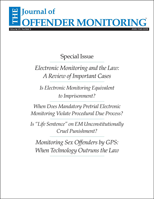AI Can Help In Crime Prevention, But We Still Need a Human In Charge
Author: David Tuffley.
Source: Volume 32, Number 02, Fall/Winter 2019 , pp.7-7(1)

< previous article |next article > |return to table of contents
Abstract:
Imagine you live in a smart city that knows your face and follows your every move—the places you go, the people you see, and all of the things you do along the way. Over time, autonomous artificial intelligence (AI) builds a profile that reports on how likely you are to commit a crime. When that risk is high, the police take pre-emptive action. Both India (Quain) and China (Mortimer) are currently implementing this level of surveillance to bring down crime rates and detect terrorists before they strike. Japan (Rogers) is also looking at predictive systems ahead of the Tokyo Olympics. London (Dearden) and elsewhere in the United Kingdom have been using similar technology (Burgess) for some time. This article examines the development and growing use of AI in policing. Pervasive, real-time surveillance like this is possible because more powerful, number-crunching computers can process the torrents of face recognition and gait analysis data coming from thousands of video cameras, all coordinated by advanced AI that can make sense of it all. Not too long ago, we relied on eagle-eyed police patrols to ensure public safety. That was when we lived in small enough communities where people knew each other by sight. But as cities continued to grow, becoming too large for the police officer alone, closed circuit television (CCTV), face recognition and next generation predictive systems are now coming into use.Keywords: Artificial Intelligence; Hyper-surveillance; Next Generation Predictive Policing
Affiliations:
1: Griffith University.